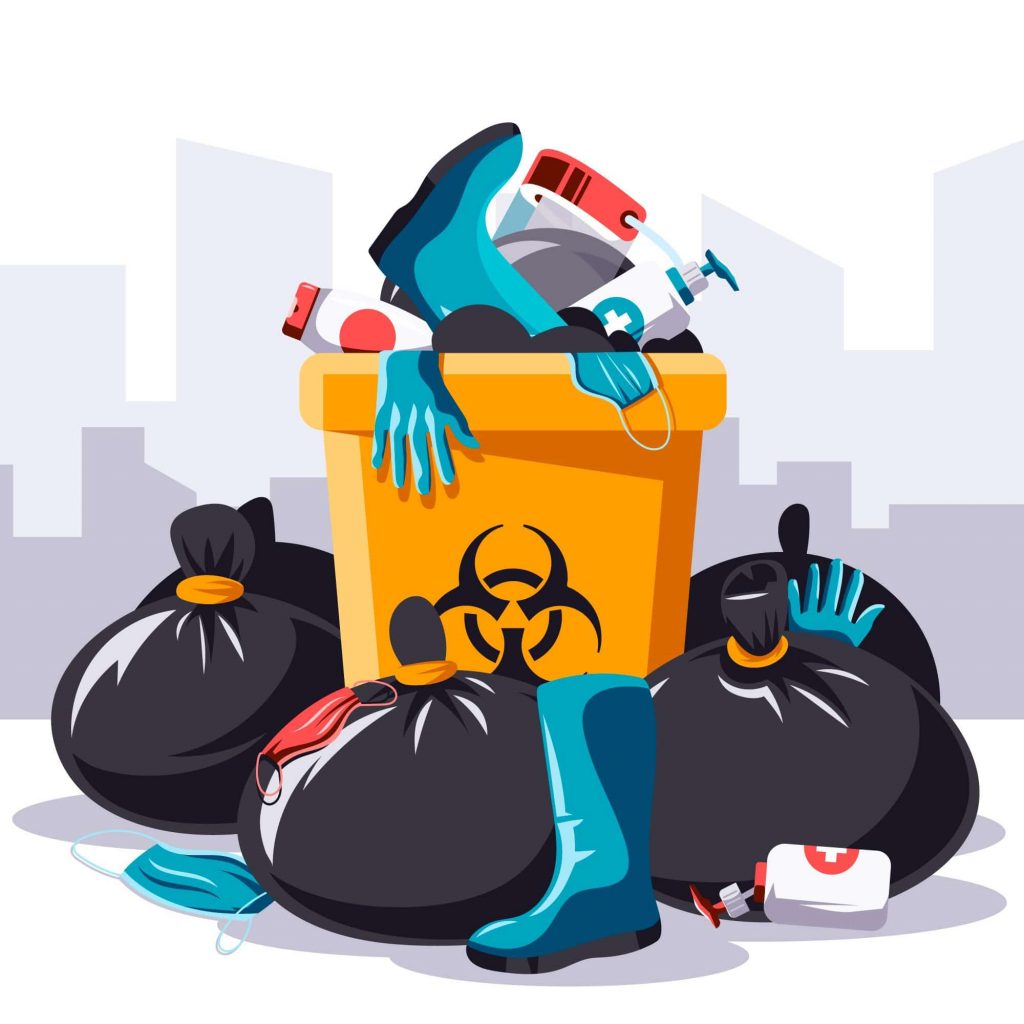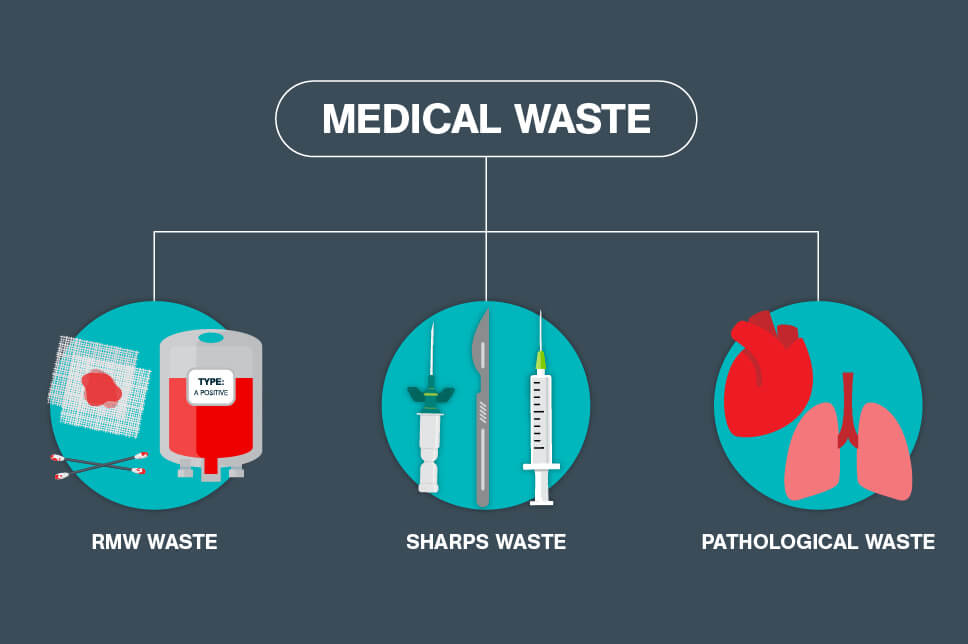Tailored Medical Waste Disposal Service: Fulfilling Health Care Conformity Specifications
Wiki Article
Compliance and Rules for Medical Garbage Disposal
Compliance and regulations for clinical garbage disposal play a critical function in making certain the security and wellness of both medical care specialists and the public. Appropriate monitoring of clinical waste is necessary to stop the spread of infections, protect the atmosphere, and preserve public wellness. This needs adherence to certain standards and procedures stated by governing firms and bodies. These regulations encompass various elements, consisting of the classification and partition of medical waste, appropriate storage space and handling treatments, in addition to transportation and disposal techniques. By adhering to these guidelines, medical care facilities can reduce the risk of contamination and potential damage to people and the environment. This write-up will certainly check out the significance of conformity and give a review of the essential laws governing medical waste disposal.Importance of Conformity
The value of compliance with regulations for clinical garbage disposal can not be overstated. Correct disposal of medical waste is important for ensuring the security and wellness of medical care workers, clients, and the public. Clinical waste, which includes things such as utilized needles, infected gloves, and biomedical waste, can position major health risks if not taken care of and disposed of appropriately.Conformity with policies makes certain that clinical waste is handled in such a way that lessens the possibility for exposure to infectious illness and hazardous compounds - medical waste removal service. It aids stop the spread of infections, such as HIV, hepatitis B and C, and various other bloodborne microorganisms. Compliance likewise plays a vital duty in shielding the environment by stopping contamination of water sources, soil, and air
Failure to abide by guidelines can result in extreme effects for health care facilities, consisting of fines, lawsuit, and damage to their credibility. In addition, non-compliance might compromise the health and wellness of medical care workers, patients, and the neighborhood.
Compliance with laws for clinical waste disposal calls for adherence to details standards and protocols. These may consist of appropriate partition, packaging, labeling, and storage space of clinical waste. It likewise includes utilizing authorized disposal approaches, such as incineration, autoclaving, or landfilling, relying on the type of waste.
Regulative Agencies and Bodies
Governing firms and bodies play an essential role in looking after compliance with guidelines for medical garbage disposal. These organizations are in charge of establishing requirements, procedures, and standards to make sure the risk-free and correct handling of medical waste. They impose and monitor compliance to secure public health and the atmosphere.One of the most popular regulatory agencies in the USA is the Environmental Security Agency (EPA) The EPA is in charge of regulating the storage, transportation, therapy, and disposal of clinical waste. They develop standards for waste generators, carriers, and therapy facilities to adhere to, guaranteeing that all needed preventative measures are required to stop the spread of conditions and contamination.
An additional important regulatory body is the Occupational Security and Health And Wellness Administration (OSHA) OSHA establishes criteria and laws to safeguard employees from occupational hazards, consisting of those relevant to clinical waste. WasteX Medical Waste Disposal. They supply standards for the risk-free handling and disposal of medical waste to protect workers in health care centers
In enhancement to these government companies, private states additionally have their own governing bodies that oversee clinical garbage disposal. These firms might have their very own specific laws and needs that must be followed.

Category and Segregation of Clinical Waste
To make sure proper monitoring of clinical waste, it is necessary to categorize and segregate it according to established protocols and standards. medical waste removal. Category and segregation play a critical duty in decreasing the danger of infection, securing the environment, and making certain the security of health care workers and the basic publicMedical waste is identified into various groups based on its potential hazard level. These categories consist of infectious waste, pathological waste, sharps waste, pharmaceutical waste, chemical waste, and radioactive waste. Each group requires specific handling, transportation, disposal, and storage space methods to lessen the danger of exposure and contamination.
Segregation of medical waste includes separating various kinds of waste at the resource. This procedure makes sure that waste with different threat degrees is not blended, reducing the potential for cross-contamination and making disposal treatments extra efficient. Correct partition is accomplished via the usage of color-coded labels and containers, which help medical care employees and waste monitoring employees manage each kind and identify of waste properly.
In addition to classification and segregation, medical care facilities should likewise stick to regional, state, and government guidelines relating to clinical waste management. These guidelines describe particular requirements for storage, transport, treatment, and last disposal of medical waste, making sure compliance and keeping public health and wellness and security.
Correct Storage and Handling Procedures
Appropriate storage and managing treatments play a critical duty in ensuring the compliant and safe monitoring of clinical waste. Clinical waste, which includes things such as used syringes, polluted handwear covers, and expired medications, can pose severe health and environmental risks otherwise dealt with appropriately. As a result, it is important for medical care centers and other generators of medical waste to apply rigorous storage and dealing with methods.
To start with, medical waste must be saved in resilient, watertight containers that are particularly developed for this function. These containers must be identified with the global biohazard icon and the words "medical waste" to plainly show the contents. In addition, the containers ought to be maintained securely shut to avoid any type of prospective leakage or spillage.
Furthermore, it is crucial to set apart different kinds of clinical waste to avoid cross-contamination. Sharps, such as scalpels and needles, ought to be saved in puncture-resistant containers to decrease the threat of injuries - WasteX Medical Waste Disposal. Chemical waste, such as disinfectants and solvents, ought to be saved separately from other kinds of medical waste to stop dangerous direct exposures or chemical reactions

Transportation and Disposal Methods
Medical care centers need to ensure the secure transportation and proper disposal of their clinical waste to abide by regulations and protect public health. Transportation and disposal techniques play an essential role in avoiding the spread of contagious illness and lessening the ecological influence of medical waste.
To transport medical waste, healthcare centers must use watertight and puncture-resistant containers that are labeled with the biohazard symbol. These containers need to be safely sealed to prevent any type of leak throughout transportation. Furthermore, healthcare centers should establish procedures for the transport process, consisting of the usage of devoted automobiles and trained employees.
Once the clinical waste reaches the disposal facility, it undergoes numerous methods of therapy. One usual method is incineration, which includes burning the waste at high temperatures to damage pathogens and reduce the volume of waste. An additional approach is autoclaving, which makes use of heavy steam and stress to sterilize the waste. After therapy, the waste is commonly sent out to a garbage dump or a WasteX Medical Waste Disposal waste-to-energy center for final disposal.
It is crucial for medical care facilities to work with licensed and allowed waste management companies to make sure appropriate transportation and disposal of medical waste. These firms have the experience and sources to manage clinical waste securely and in conformity with guidelines.
Final Thought
Finally, conformity with laws for clinical garbage disposal is of utmost relevance to guarantee public health and wellness and safety. Regulative firms and bodies play an important function in implementing these guidelines. Appropriate category and partition of medical waste, along with following ideal storage space and dealing with treatments, are vital to prevent contamination and the spread of conditions. Ample transportation and disposal techniques must be implemented to decrease ecological effects. Generally, adherence to conformity and laws is necessary to efficiently take care of medical waste.Medical waste, which includes items such as made use of needles, polluted gloves, and biomedical waste, can pose significant health threats if not dealt with and disposed of appropriately.
These classifications consist of contagious waste, pathological waste, sharps waste, pharmaceutical waste, chemical waste, and radioactive waste.Segregation of medical waste involves dividing various types of waste at the resource. Appropriate segregation is achieved via the use of color-coded containers and labels, which help healthcare employees and waste administration workers deal with each kind and recognize of waste appropriately.
Chemical waste, such as solvents and disinfectants, should be stored individually from other types of clinical waste to protect against chemical reactions or hazardous exposures.
Report this wiki page